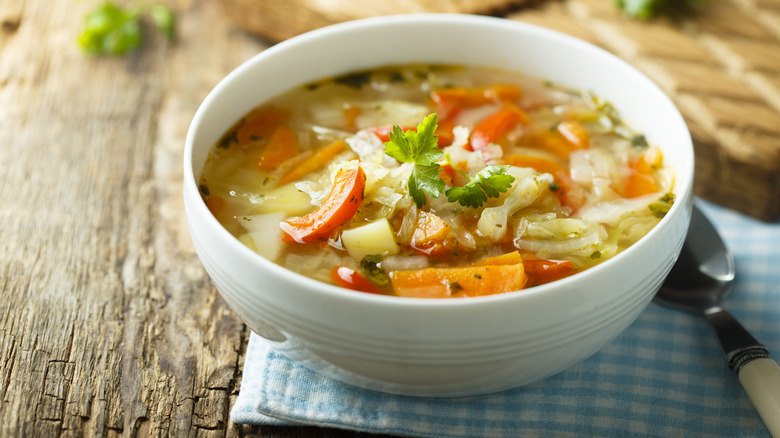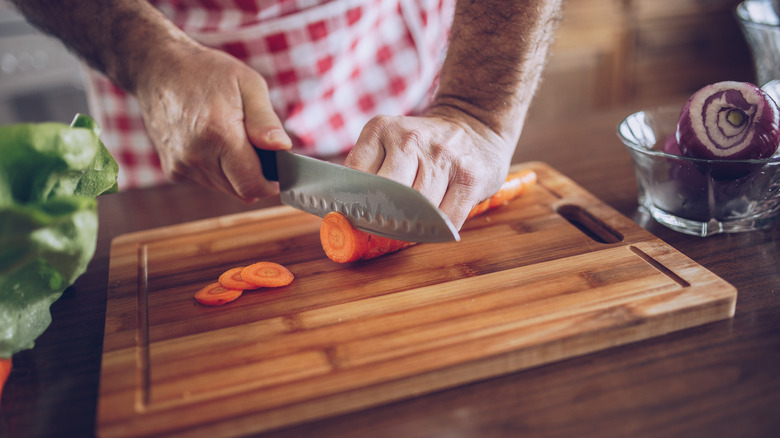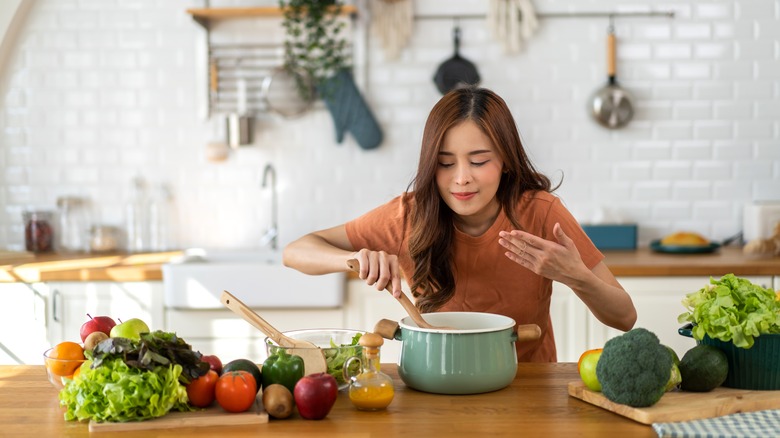Why Your Soup Vegetables Are So Mushy (And How To Avoid It)
Even the most flavorful soup will suffer from sad, mushy vegetables, which is an all-too-common occurrence when it comes to homemade recipes. The issue is the hemicellulose found in vegetables, as this carbohydrate degrades when exposed to high temperatures on your stovetop. The longer vegetables simmer away in the broth, the softer they will become. Fortunately, you can avoid this common cooking faux pas by incorporating vegetables and other soup ingredients in steps, instead of all at the same time.
This technique allows greater control over cooking time, which is key to creating tender, toothsome veggies. For example, incorporating carrots too soon will negatively affect their texture when the soup is ready to serve but adding them after other ingredients (such as meat and onions) lets them impart flavor without becoming too soggy. Being mindful of when you're adding ingredients to a hearty vegetable soup recipe will result in a finished dish that hits all the right notes when it comes to flavors and textures.
When to add veggies to soup for optimal flavor and texture
When determining the best possible time to add a specific vegetable to your soup, consider the attributes of the vegetable you're incorporating. Some soup ingredients can be added earlier than others thanks to their heartiness, which means it will take longer for them to soften. When whipping up a robust potato, cheddar, and bacon soup, the potatoes can be used somewhat early in the cooking process. The same is true of cabbage, squash, and kale, as these vegetables cook slowly.
Other veggies are best added just before the soup is finished cooking. This includes more delicate ingredients, such as smaller heads of broccoli and cauliflower, as well as asparagus. When it comes to carrots, size matters. Larger chunks of carrots may be fine when added earlier, but small, thin pieces should be added later. The same goes for celery, as small celery pieces can break down quickly in simmering broth.
Can you incorporate vegetables after cooking?
If you're a true connoisseur of vegetable soup, adding an extra cooking step may be worthwhile if you want to enhance your recipes. This method involves cooking vegetables on their own, which ensures the perfect texture and doneness. When the veggies and soup are finished cooking, the two can then be combined.
Keep in mind that you should still use vegetables when cooking the broth itself, as they're a crucial component when it comes to creating your desired flavor profile. In this case, you can simply remove the mushy veggies when the soup is complete and replace them with the separately cooked vegetables. There are numerous ways to cook vegetables, and some methods work best with specific vegetables. For instance, you can beautifully caramelize carrots and sweet potatoes by roasting them, while sautéing peppers and mushrooms enhances their flavors and achieves a pleasurable texture.


